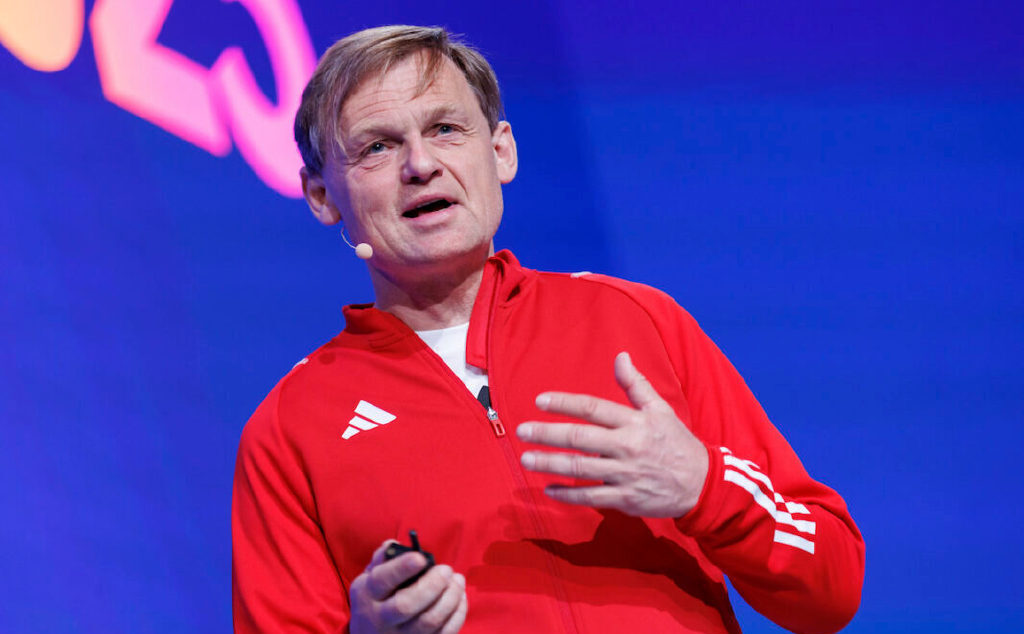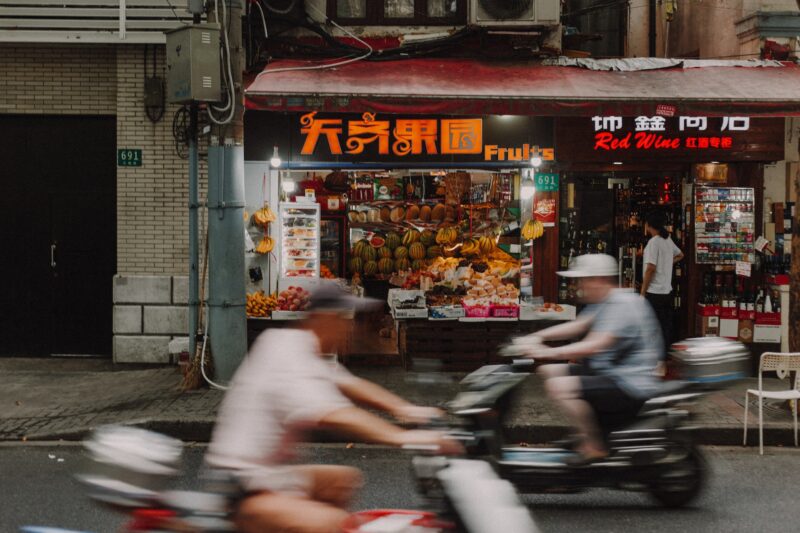Adidas’s new CEO, Bjørn Gulden, has touched down in China for the first time since taking over the role in January.
In a press conference on September 16, Gulden said the German sportswear maker is moving from “quality recovery” into “quality growth” in the Chinese market, as it starts to reap the rewards of a recent overhaul in its localisation strategy. Images from the press conference showed Gulden sporting a jacket emblazoned with “China” in Chinese characters, a design first launched by the brand when it served as an official partner for the 2008 Beijing Olympics.
“We believe that China will become the world’s largest sports market, and Adidas will make investment plans based on this judgment,” Gulden said. Designing products to suit regional tastes is a major part of Gulden’s vision as he rejects the notion that globalisation is homogenising consumer preferences worldwide.
Gulden also revealed that Adidas is aiming for 70% of products sold in the Chinese market to be made in China by next year. “For any global brand, using local resources to get closer to local consumers is the right choice”, Gulden added. As outlined during his first earnings call with Adidas in March, Gulden is set on upping the brand’s local manufacturing capabilities across all its strategic markets, including the opening of a new distribution centre in Suzhou.
Last year the brand’s previous CEO, Kasper Rorsted, unexpectedly stepped down years ahead of his contract ending, after admitting the brand had “made mistakes in China”. Adidas and its longtime rival Nike have both faced boycotts by Chinese consumers as a result of the Xinjiang cotton controversy of 2021.
Better Cotton Initiative (BCI), an advocacy group for ethical practices in cotton farming which Adidas joined in 2010, suspended activities in the province in 2020 over allegations of state-sanctioned forced labour. “If you boycott Xinjiang cotton, we’ll boycott you. Either Adidas quits BCI, or get out of China,” one Weibo user wrote during the furore in March 2021.
At the same time, China’s homegrown sportswear giants Anta and Li Ning have entered a golden age, having grown in the past five years to become highly sought-after and respected brands. Stoked further by the rise of guochao or “China chic”, these brands have unseated Nike and Adidas as China’s most profitable sportswear brands.
After witnessing a “significant drop in traffic across physical and digital channels” in China during the peak of the boycott, the brand began to see a reversal in fortune in 2022 with 25% growth for the whole year. Then, in the second quarter of this year, Adidas posted a revenue of 766 million EUR (819 million USD) in the Chinese market, a year-on-year increase of 16.4%.
Spurred by these encouraging figures, Gulden is working hard to keep Adidas relevant by signing Chinese athletes in “almost every sport” and teaming up with the country’s hottest young Chinese designers, like Qiu Shuting and Zhou Rui. “We see ourselves as a lifestyle company and want to connect more with young Chinese people, and with street culture,” Gulden said.









